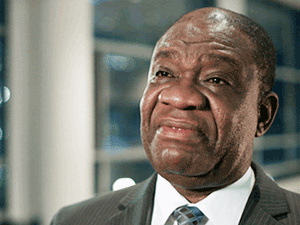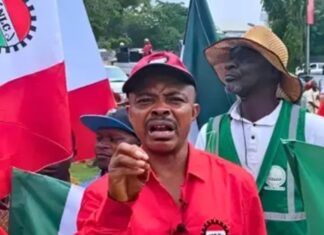Power reform embarked upon by the government was thought to be an uphill task given the myriad of problems in the sector. But parts of the country are seeing improvement in electricity supply, reports Correspondent SAM NWOKORO.
Parts of Lagos have seen improvement in power supply in the past few weeks.
“In my area, we have been having light regularly, unlike before. They still cut it but not as frequently as before. Since the past one week, we have had power supply throughout the night.
“It is unlike in the past when we did not even have light for two or three straight days, not to talk of having light at night,” recounted Michael Ezenwa, who has an electronic shop in Mushin, Lagos.
Paul Iwu, who sells video films in Lawanson, Lagos, said: “Before, we would not have light for a whole week; sometimes we would have it three or four times a week, but it would not last up to four hours.
“But these days sometimes they supply it in the morning and it will stay till night.”
Residents around Yaba, Lagos have also reduced complains about inadequate power supply.
A seller of textiles at Yaba market, who identifies himself simply as Chinyerem, told TheNiche that “before, we would not have light for two to three days; everywhere there was generator. But for two weeks now, the situation has improved.
“We thank (Governor Babatunde) Fashola’s government.”
Little additions with impact
The federal government has commissioned various power projects recently which make little additions to the national grid to improve supply since February.
The administration of President Goodluck Jonathan had inherited a comatose power sector where crooks and saboteurs held sway.
The name change and cosmetic restructuring of the Nigerian Electric Power Authority (NEPA) to Power Holding Company of Nigeria (PHCN) hardly contributed to electricity supply to homes and businesses.
Nicholas Onwuka, who manufactures aluminum doors in Lagos, recounted that “even when Nigeria was transiting to a liberal economy and the government was relinquishing shares in state-owned entities, there was not the foresight that private competition would demand an efficient power delivery system for those who bought those businesses to run them with minimal cost.
“Electricity is the soul of any free market environment.
“That is what exacerbated the power crises to the status it assumed between 2001 until 2005 when a new power reform structure was contemplated by the Olusegun Obasanjo government. And even that was also not comprehensive.”
Though new power projects commissioned seem like a drop in the ocean, observers believe they hold promise that Nigeria can overcome power shortage if the reform roadmap launched in 2010 is pursued vigorously.
Two weeks ago, Jonathan inaugurated the 750 megawatts (mw) Olorunshogo power station in Ogun State. He also commissioned System IV of Egbin power plant in Lagos, a unit of the thermal plant built in the 1990s.
System IV restored the installed generating capacity of Egbin to 1,300 mw per hour.
Jonathan disclosed that the National Integrated Power Project (NIPP) collectively driven by the three tiers of government is still on-going.
Generation nationwide rose to 3,841.05 mw at the end of February, an increase of 904 mw from 2,938.85 mw two weeks earlier.
Reform eyes 2020
Before the power reform in 2010, generation capacity was between 300 mw and 450 mw. To achieve 40,000 mw by 2020, investment of at least $3.5 billion yearly is required, according to experts.
Abuja discarded the 2005 power privatisation scheme because it lacked the opportunity for private sector investment and diversified energy sources, then set up a Power Sector Task Force in June 2010.
The task force was asked to
• Remove all legal and regulatory obstacles to private sector investment in power.
• Monitor the planning and execution of all short term projects in generation, transmission, distribution, and fuel-to-power.
Nigeria targets 6,000 mw in 2015 if it can curtail the activities of vandals from destroying gas pipelines.
Why roadmap
Presidential Task Force on Power Chairman, Clement Oke, said the roadmap arose from the reality that without investment by the private sector, the government cannot deliver electricity at a pace that would bridge the gap between demand and supply.
Other reasons include the fact that
• It takes years of multi-dimensional planning, funding, and execution to deliver a long chain of projects which produces electricity.
• Rural communities, where about 50 per cent of Nigerians live, are cut off from the national grid.
The task force split PHCN into eight companies for “the inflow of private sector investments, the creation of new power generation and distribution entities, and the subsequent development of a competitive electricity market.”
Timeline
The programme allows reviews at intervals to eliminate hindrances to generating 40,000 mw by 2020. The 2010 plan was re-appraised in 2012 from which the plan for 2014 was drawn.
Oke disclosed that “the PTPR-initiated roadmap revision was principally undertaken to address cases of slipped projections in the 2010 roadmap.
“Through a detailed study, the review targets the projection in such a manner which would recommit the project owners to the undelivered portions of the milestone in the roadmap.
“The reviews made projections up to 2020 and placed emphasis on issues and challenges which must be addressed in the 2013-2014 timeline in order to sustain the required tempo for the reform.
“Such issues as project funding and timely release, and effective project delivery efforts by project owners, were all aimed at sustaining public and investor confidence in the reform.”
The success factors of the 2013-2014 timeline included
• Development of optimal transmission capacity expansion and funding strategy for generation.
• Acceleration of operational levels for the Transmission Company of Nigeria (TCN) to implement collection efficiency and returns to the market during the pre-transitional electricity market declaration stage.
• Conclusion of all labour negotiations, settlement of liabilities, rationalisation and eventual winding down of PHCN.
• Continuation of the political will to resist efforts that could undermine reform and privatisation.
• Commitment to delivering gas development and transportation infrastructure for gas-to-power alignment.
• Prevention of vandalism to pipelines such as the trans-Forcados, trans-Niger crude oil lines, and Escravos-Lagos.
• Clarity on the operation and maintenance of the National Integrated Power Project (NIPP).
Newly completed projects
Power schemes in the past five years include fast-tracking completion of NIPP, energy mix with emphasis on renewable energy sources (solar and coal), hydro-power development, feasibility studies on damable waters, strengthening distribution, completion of rural electrification, and constituency project appropriations.
Power Minister, Chinedu Nebo, said newly completed power plants are in Katsina (10 mw), Kaduna (215 mw), Zungeru (700 mw), Gurara1 (30 mw), Mambilla (3,050 mw), Olorunshogo II (675 mw), Omotosho II (451 mw), Geregu II (434), Kashimbila (40 mw), Ihovbor (450 mw) Sapele (450 mw), Gbarain (225 mw) Omoku (225 mw) Alaoji (960 mw), and Calabar (563 mw).
Those completed previously include Olorunshogo (675 mw), Sapele (450 mw), Alaoji (225 mw), Omotosho (338 mw), Geregu (435 mw), and Ihovbor (224mw).
Another 215 mw plant being built in Kaduna is at 65 per cent completion.
Some 11 renewable energy schemes are going on, and feasibilities studies have been done on 16 dam projects. A 330kv transmission network to connect every state is being constructed.
According to Nebo, a strong network with greater capacity is needed for the new power projects when completed between now and 2018.
An ambitious project and its headaches
“Fear exists that if the template is not consistently pursued as planned, the project can derail,” said Nigerian Gas Association Chairman, Obineche, who was boss of the Nigerian Liquefied Natural Gas (NLNG).
He advocated concerted effort to steady gas supply to power plants.
A N213 billion intervention fund has been established in banks for investors to borrow to facilitate generation and distribution.
However, funding power projects has not ensured equitable control of natural resources, which causes disruption of gas supply.
Niger Delta activist, Simon Owoeye, said: “We have always made it clear that the Power Reform Programme can only work effectively if the issue of resource control is holistically addressed.
“You don’t force people to give away their God-given right and property to some interests that do not even care if they exist on planet earth in the name of power sector.
“For now we don’t know what the Petroleum Industry Bill is talking about. How does it address our worries? The power sector is expanding, plus the one the government is taking away in the name of one Nigeria.
“This means more pressure is going to be on the mineral resources in the Niger Delta, and nobody is talking about these things. Are we not part of this country?”
Big stakes
Both government and private cash has traversed the corridors of the electricity roadmap. Local and foreign interests have invested in it.
Most of the local generation companies (Gencos) and distribution companies (Discos) that constituted NEPA were bought by local players with spicing from international partners.
The United States has pledged more than $1 billion in aid to Nigeria’s power reform. France, China, Germany, Italy, and Japan are involved, alongside the United Nations Development Organisation (UNIDO), the World Bank, and the United Nations Development Programme.
“My appraisal of the sector over the past few years has revealed that the factors that affect reliable electricity service delivery in Nigeria include the absence of a sustained and deliberately deployed long term power development strategy under exploitation of our abundant energy endowment and the absence of adequate and unknown implementation method,” Jonathan said while receiving the roadmap.














